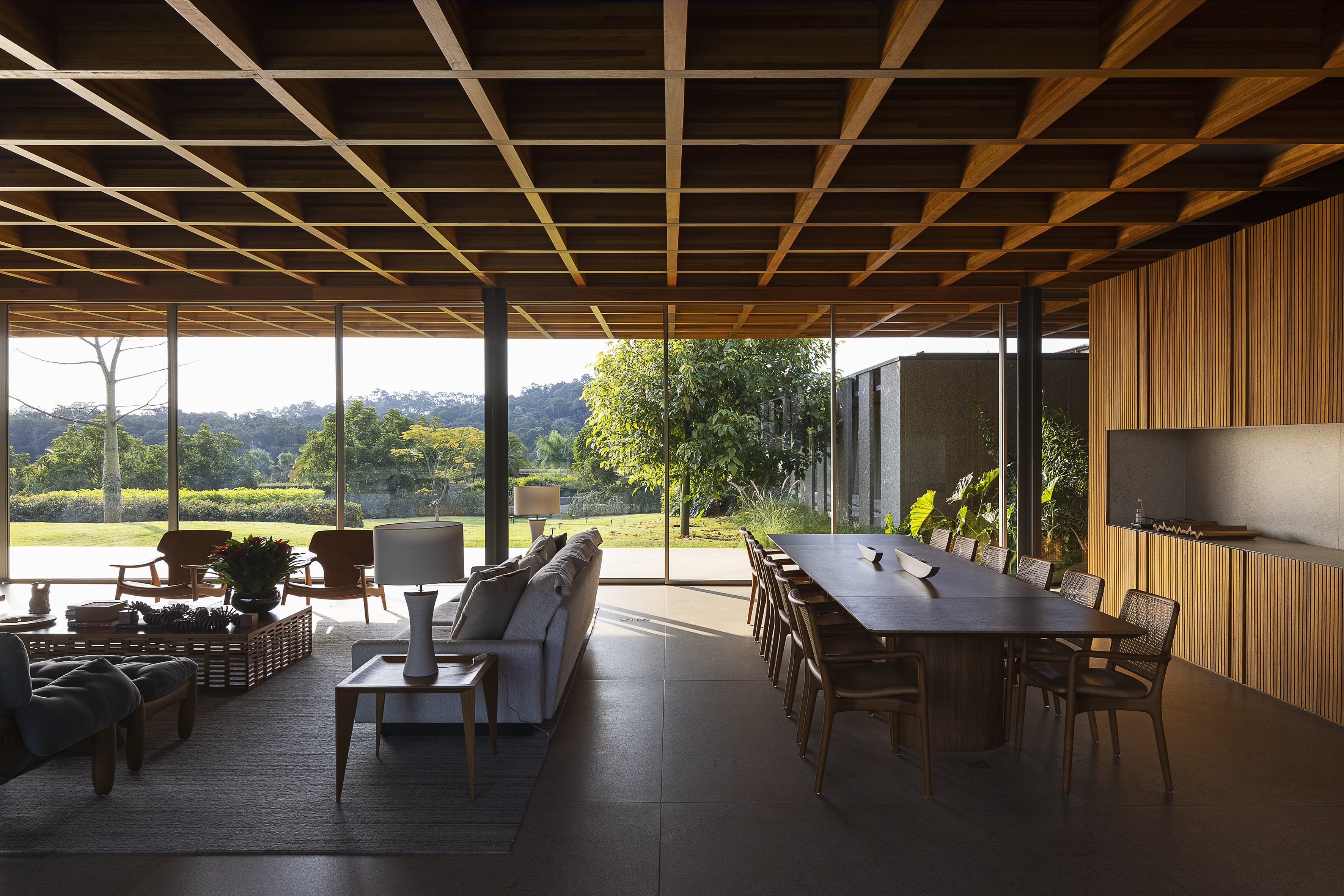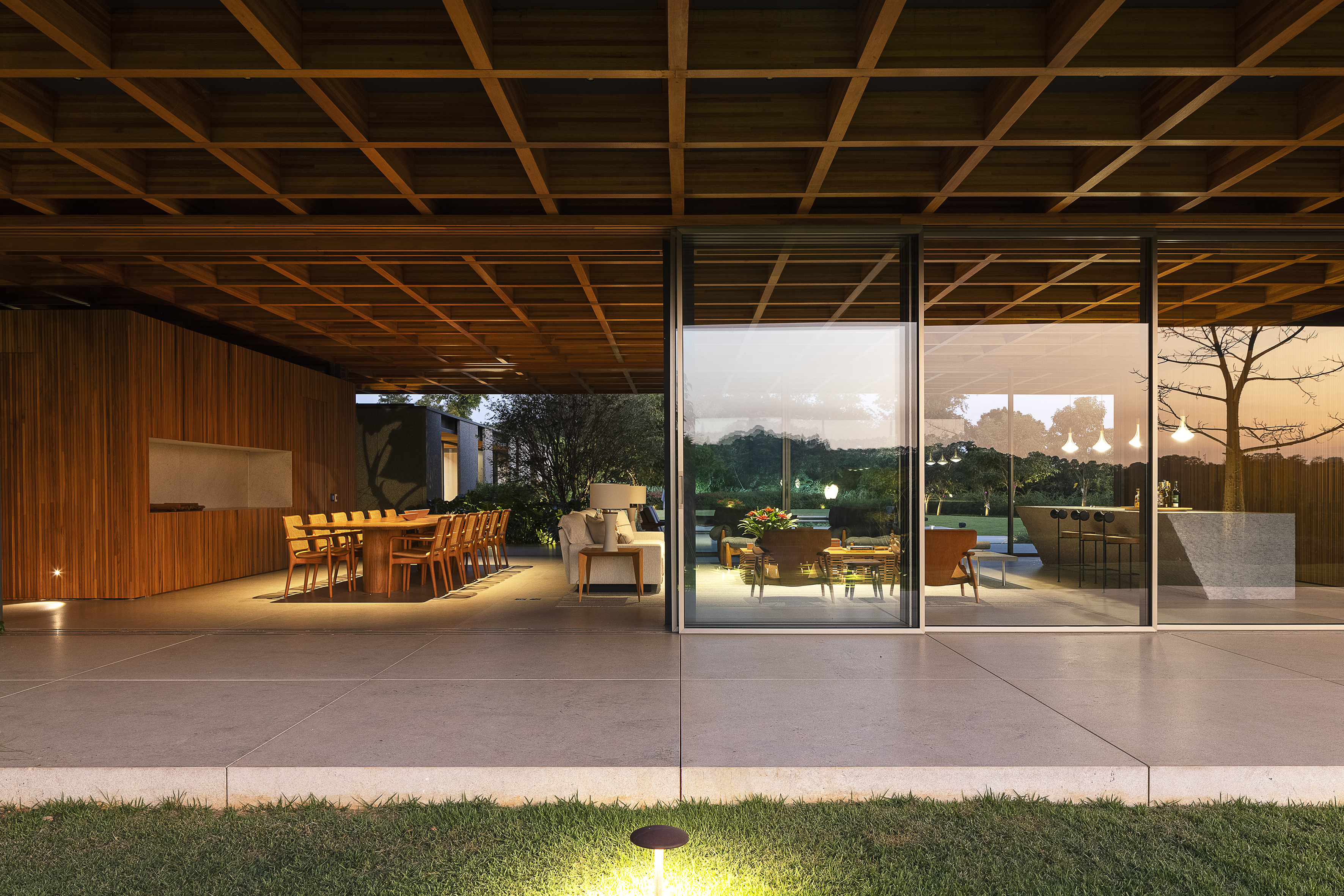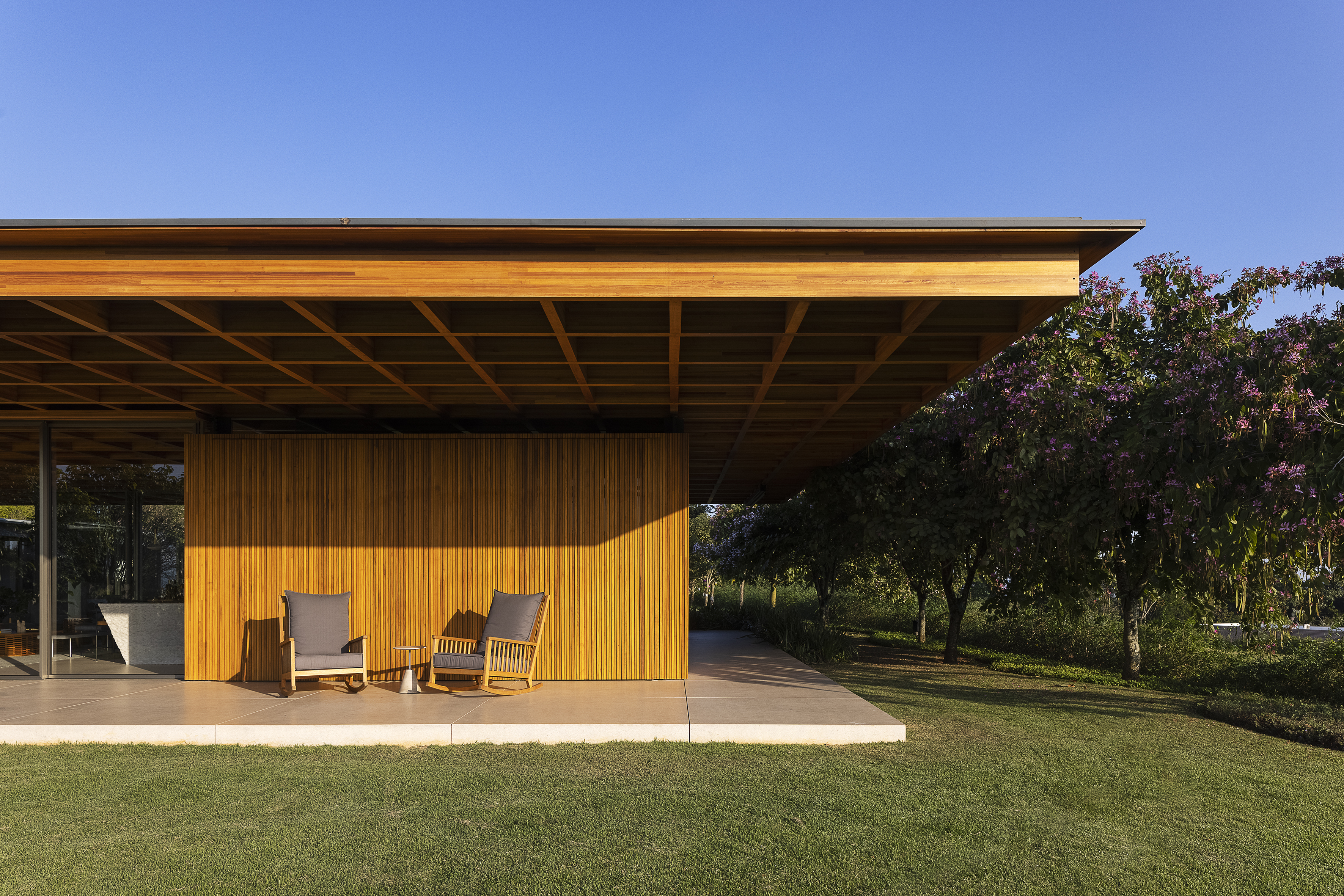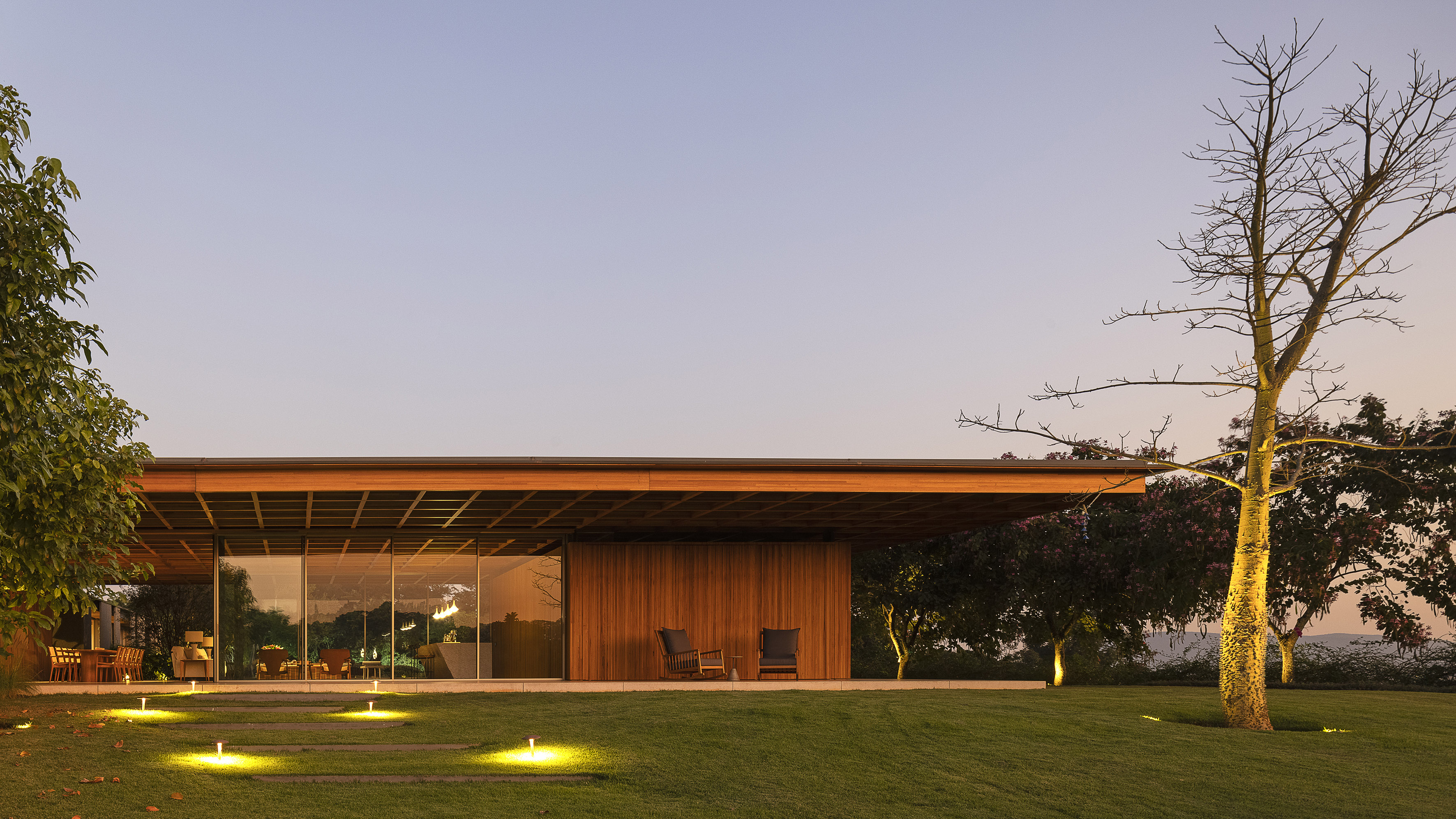
RCN House
Porto Feliz, São Paulo

FACTS
- Total area
- 4.417m²
- Built area
- 1.055m²
- Conclusion
- 2021
Project
- Architecture
- Jacobsen Arquitetura
- Architecture Team
- Paulo Jacobsen, Bernardo Jacobsen, Edgar Murata, Marcelo Vessoni, Fernanda Maeda, Felipe Bueno, Alan Cruciti, Paula Miele, Juliana Dalkimin, Maria Caporale, Raíssa Simão
- Interior Design
- Jacobsen Arquitetura
- Interior Design Team
- Marcela Guerreiro, Décio Araújo, Luiz Santini, Amanda Leal
- Landscape Design
- D'orey Brasils
- Lighting Design
- Lunare
- Photos
- Leonardo Finotti
- Construction Company
- Douracon Engenharia
The RCN House, whose site was chosen by the clients for its direct access to the golf course, is a house in which contrasts complement each other. Wood, stone, metal and concrete, interconnected and embraced by the surrounding nature, make up this unique project on the outskirts of São Paulo. Two perpendicular volumes meet and create the shape of the project, positioned at the highest point of the site. In this way, it is possible to observe the surroundings without being observed at the same time, giving privacy to its residents.
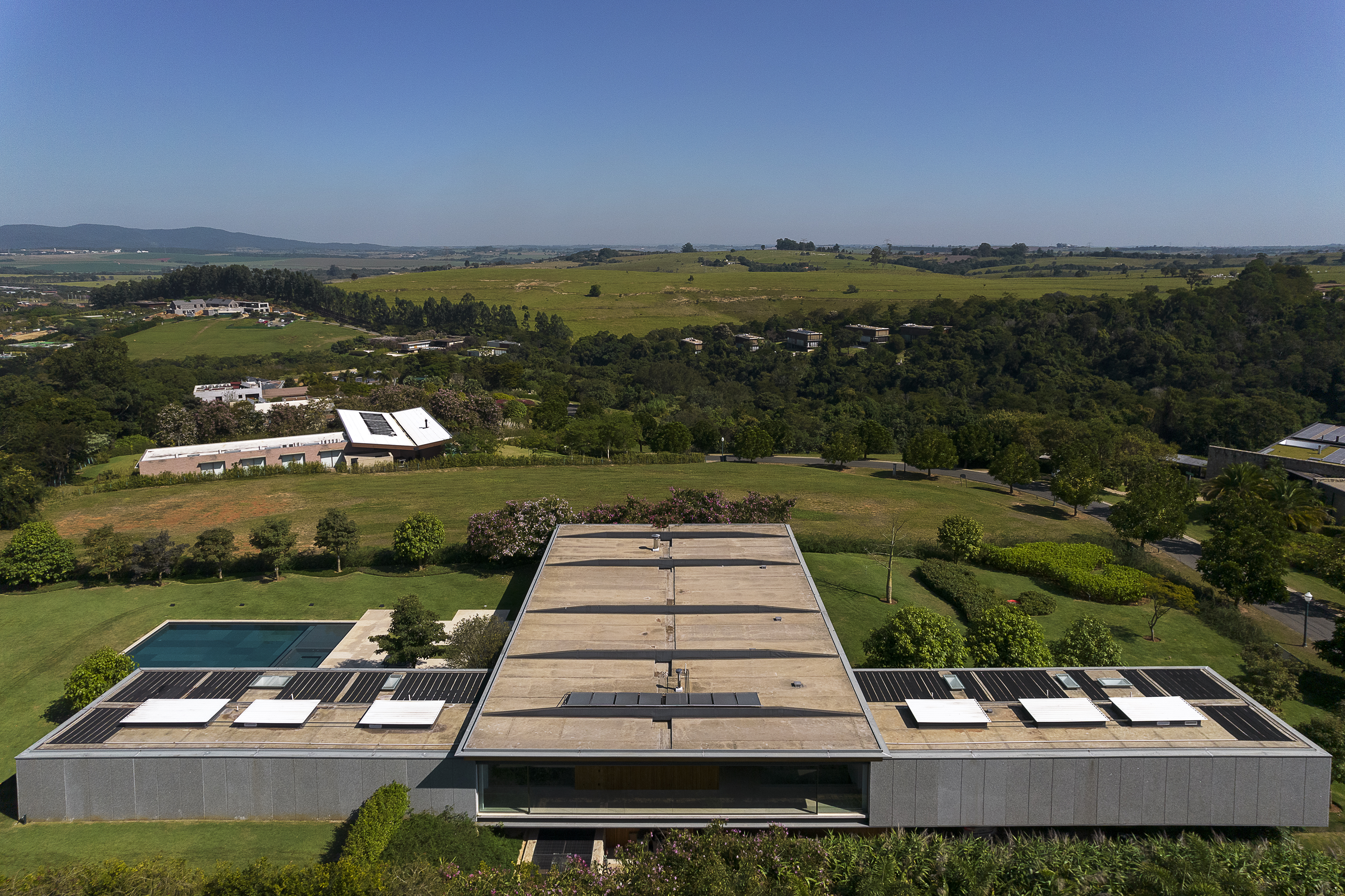
When visitors arrive at the house via the street access, they are invited to climb the gently sloping terrain, and are welcomed by the large eaves of the central social volume.
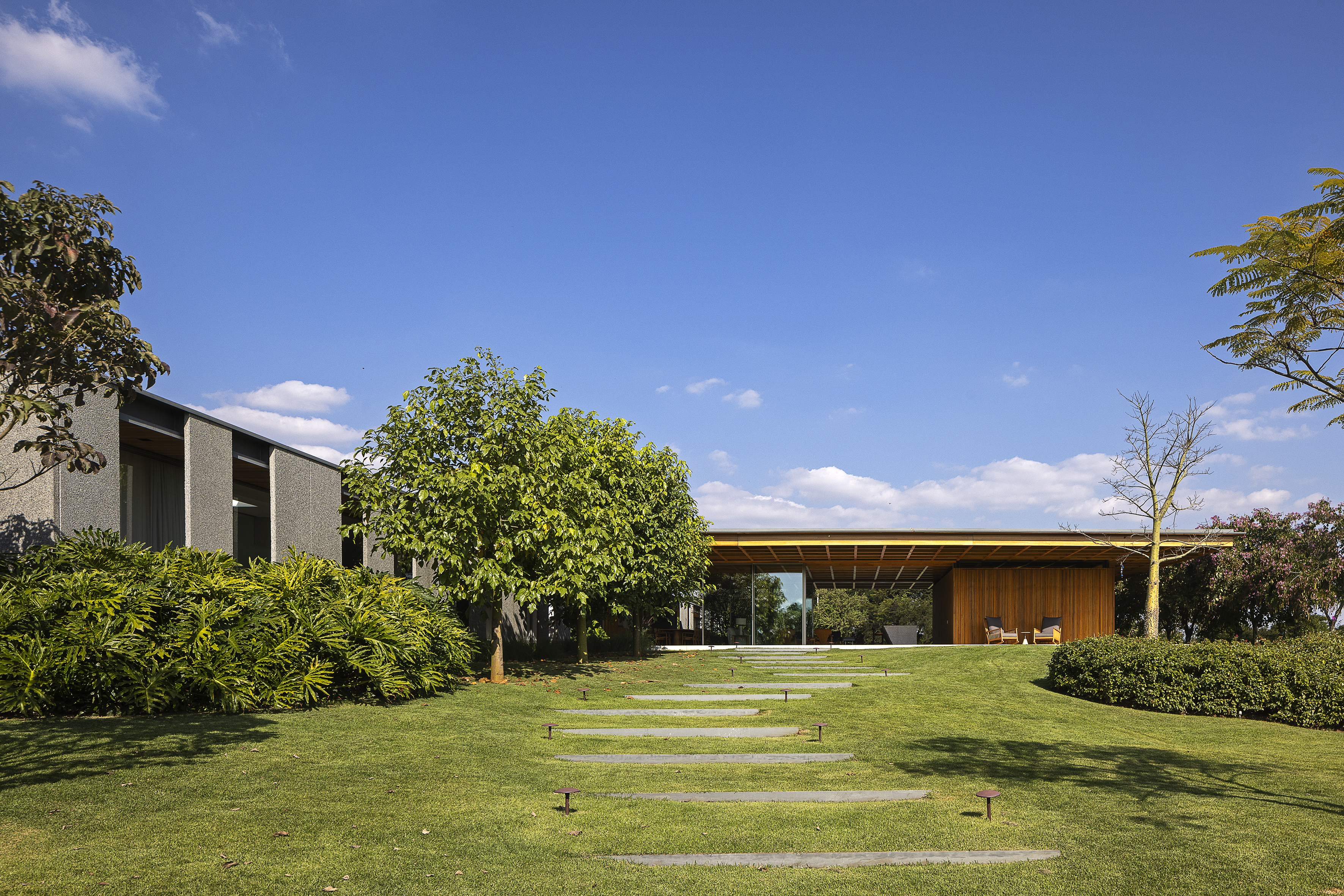
There, they find the main social areas: the living room and the dining room, as well as a gourmet area, a bar and a home theater. When crossing it, they reach the flat garden area, where the swimming pool is located.
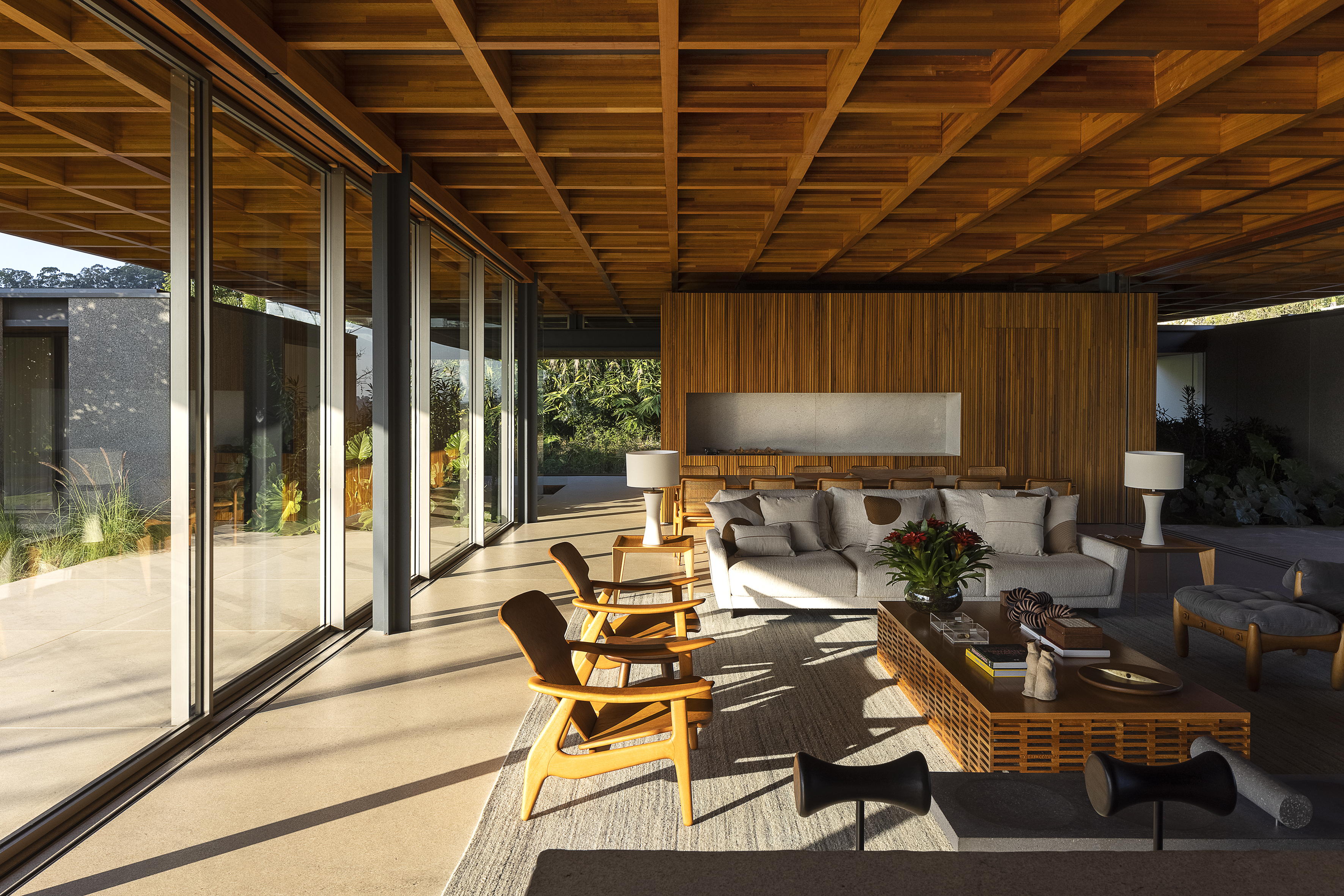
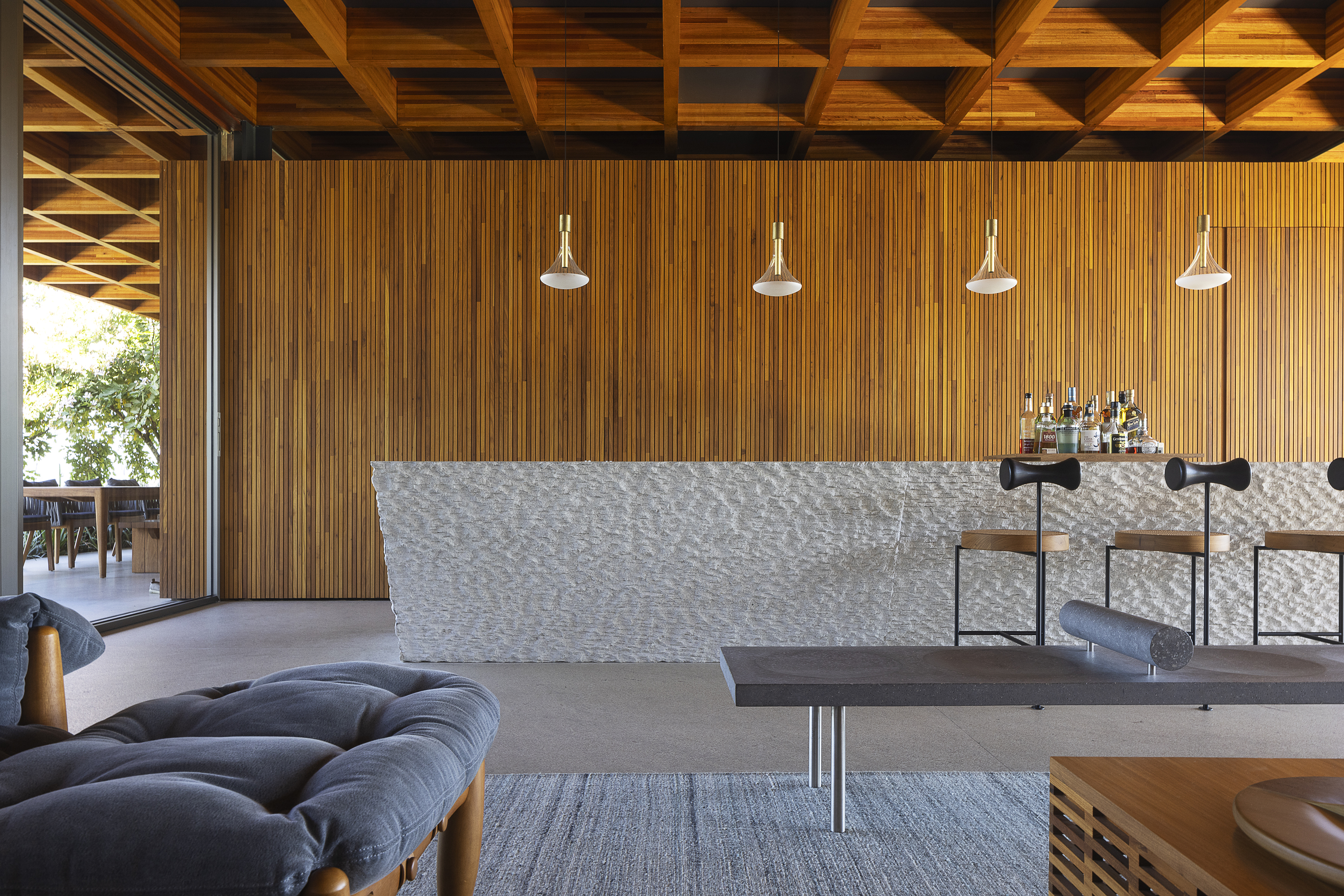

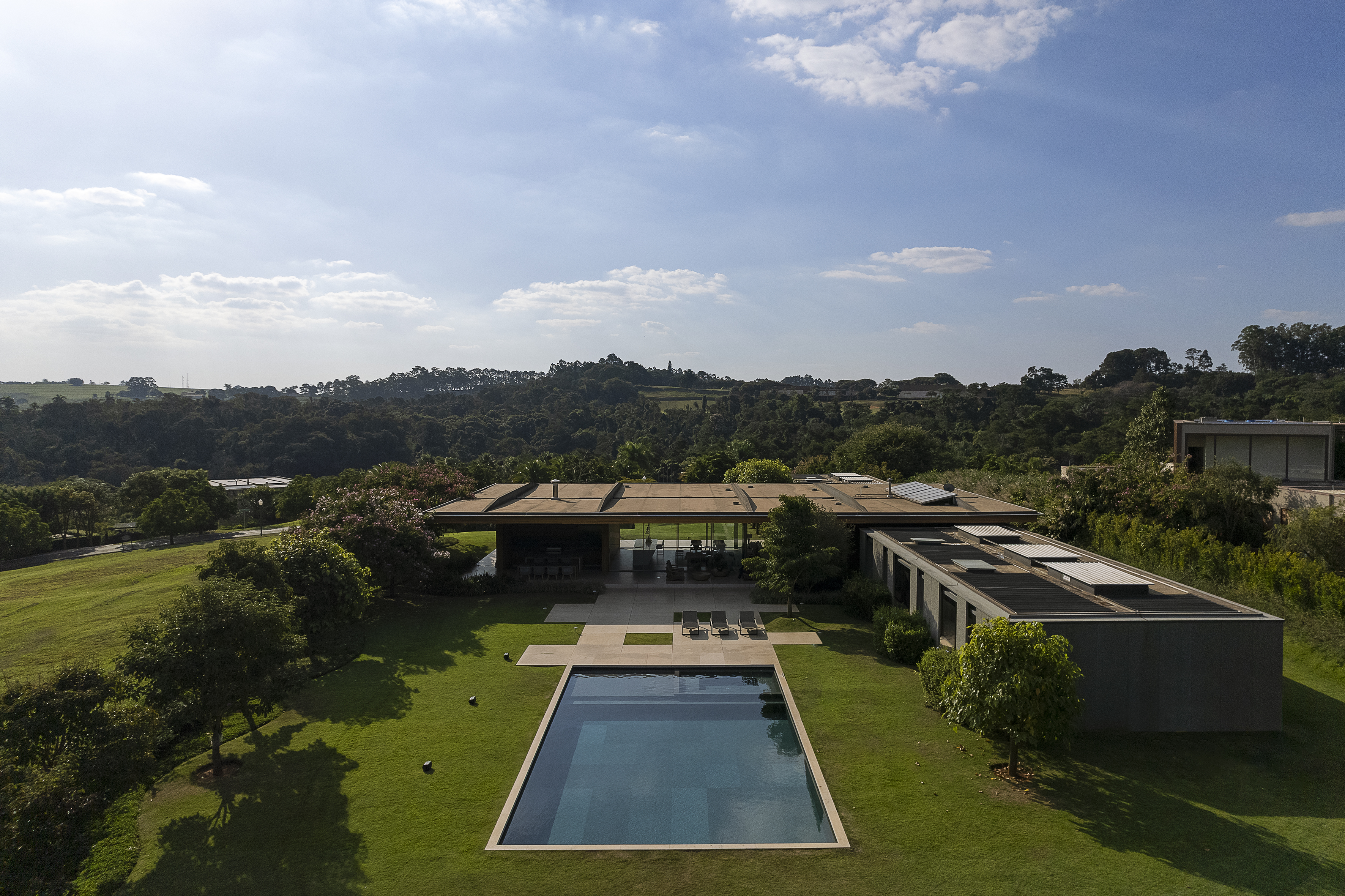
This configuration creates the impression that this is a completely one-story house, when in fact there is a floor below, in a concrete structure, where the service areas such as laundry and garage are located.
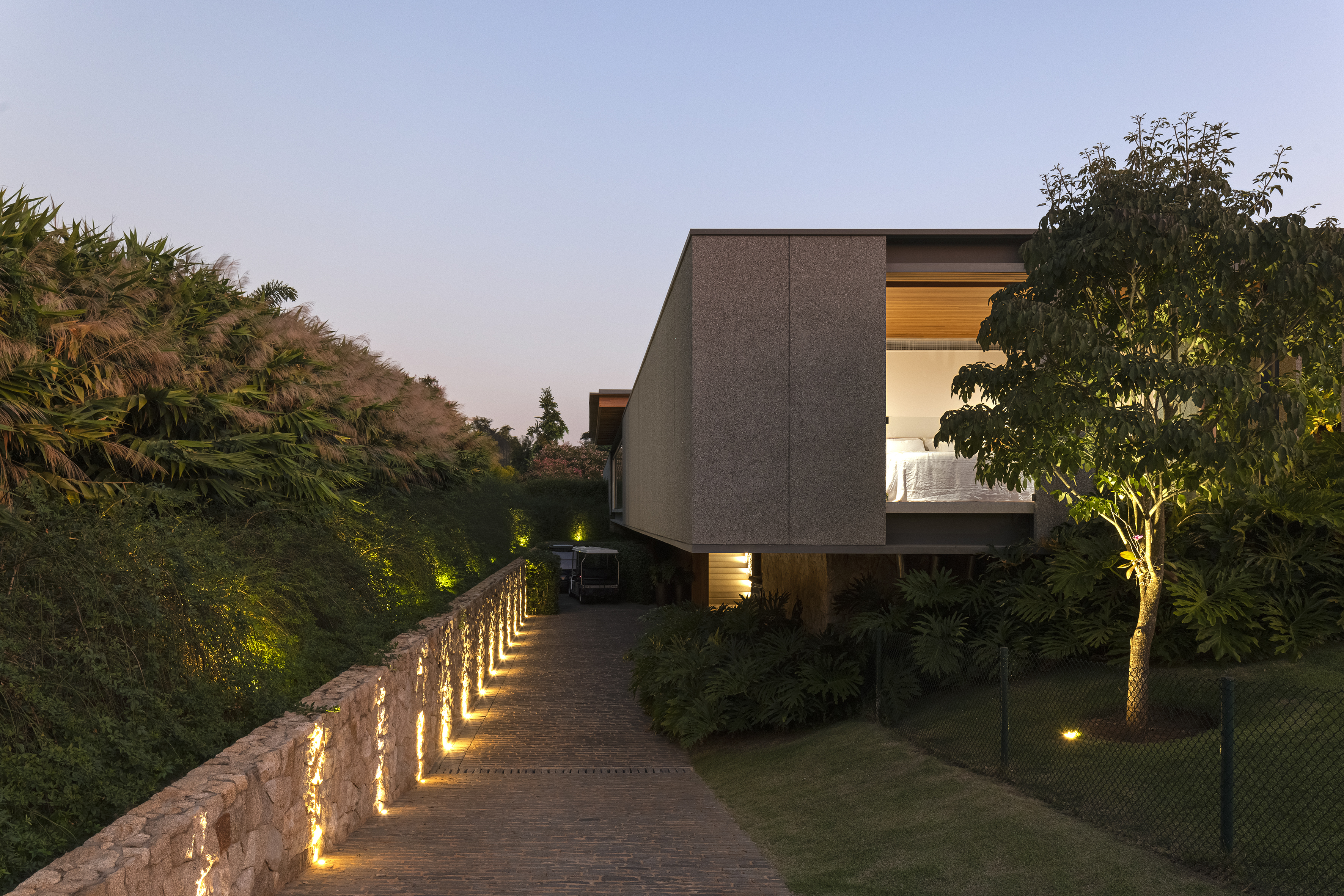
Along this main axis, the living room opens onto both sides of the garden, making the most of natural lighting and at the same time creating visual continuity. In this sense, the long eaves with wooden beams are elements that reinforce the impression that the house lightly floats over the land, gently resting on the volume of the private axis. This volume was composed with a metal structure, and is where the rooms are located, and whose facades are covered with by prefabricated concrete slabs.
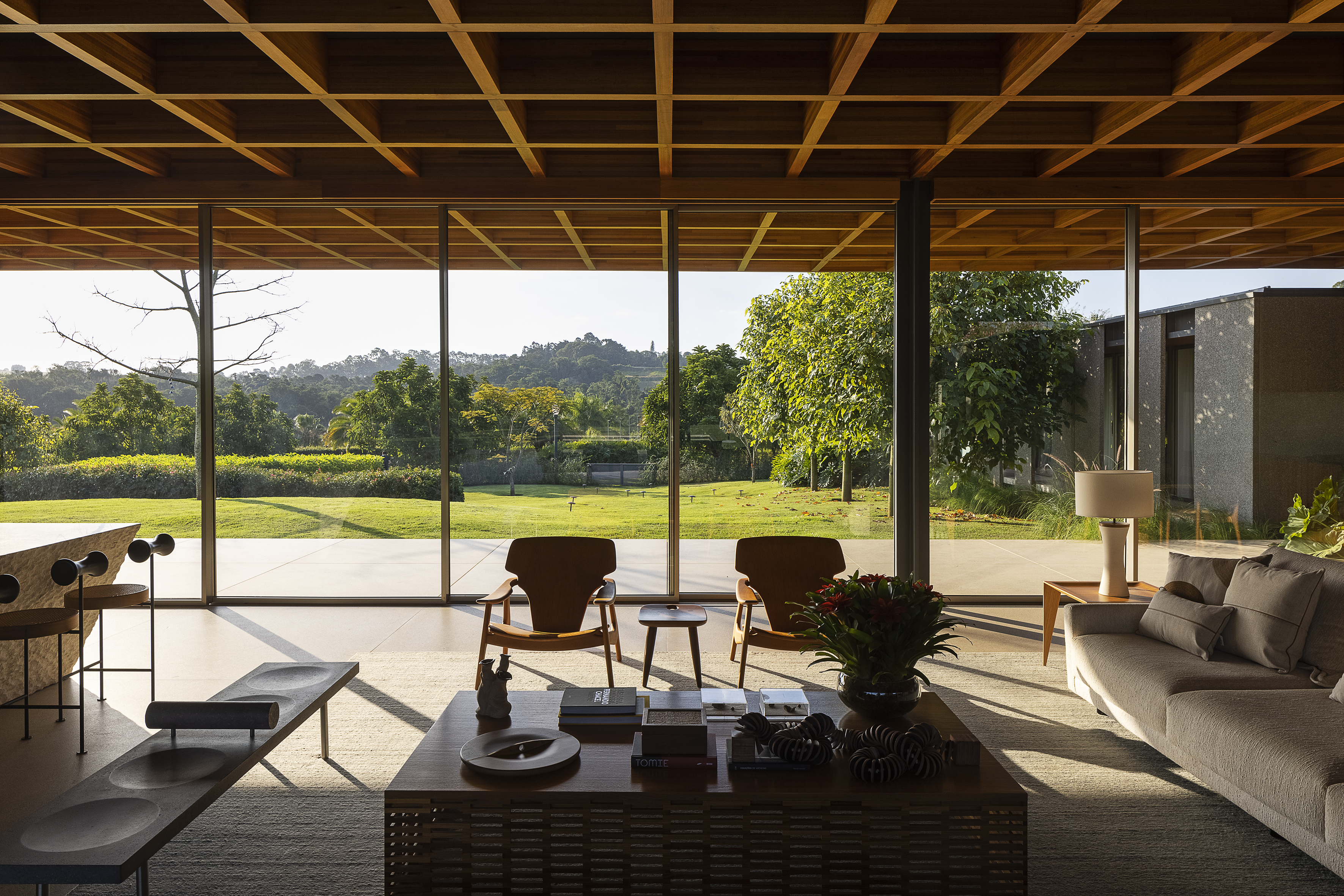
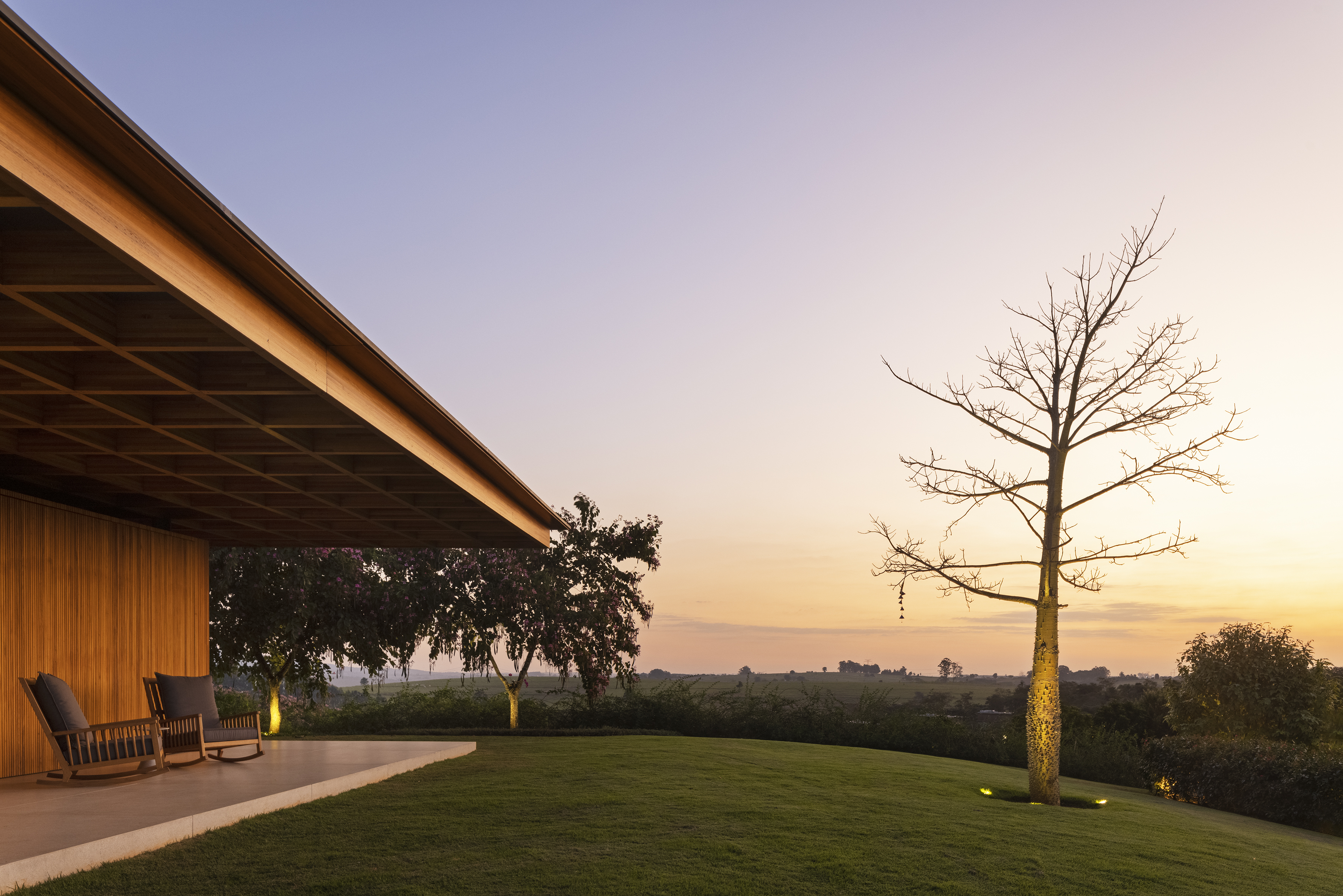
This choice of covering was fundamental for this block: it created a visual impediment so that the neighbor who is on a slightly higher ground would not be able to see what was happening in the house or in the garden.
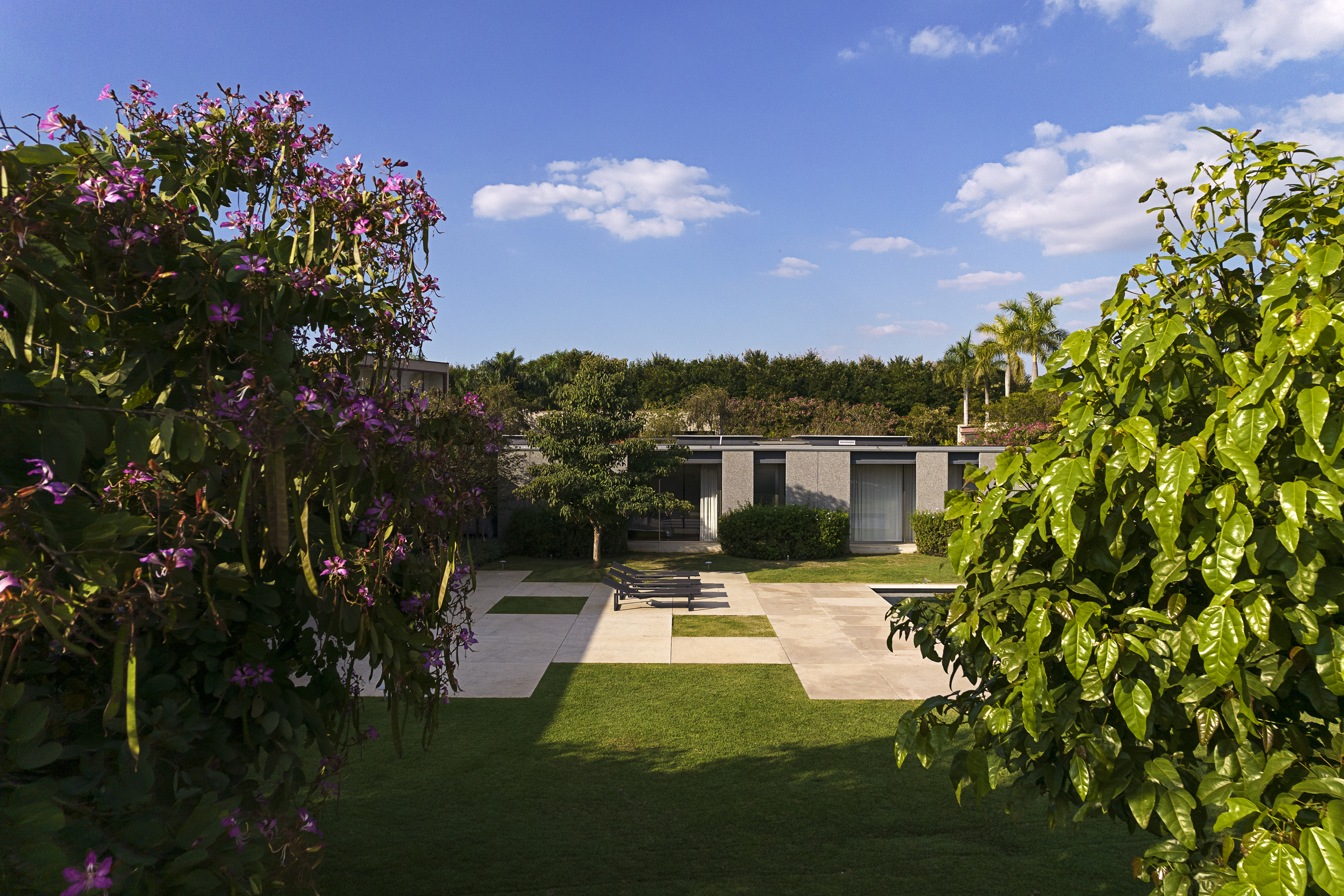
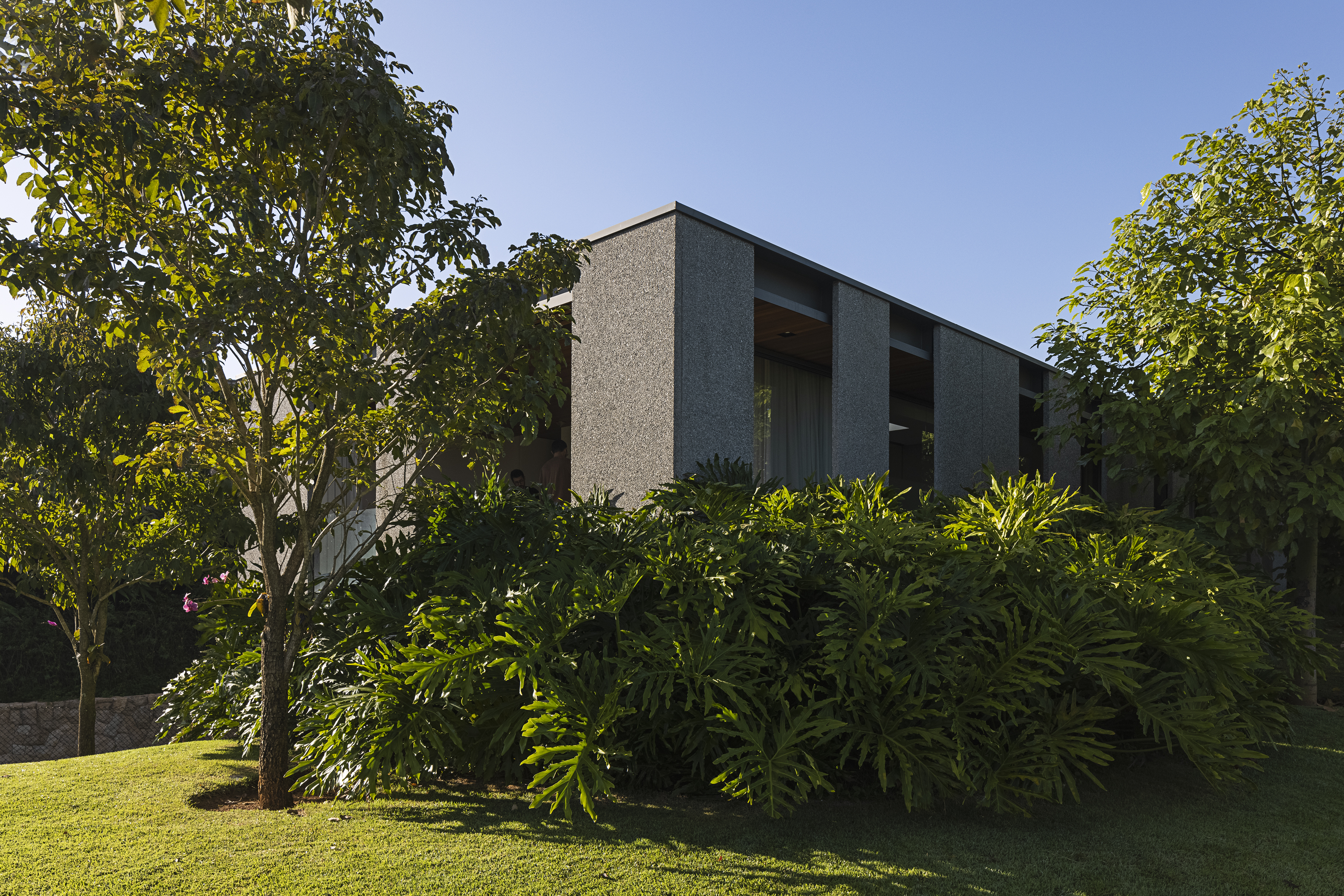
The use of this material also allowed the bedroom windows to be receded into this stone volume, creating an area of shade, where the wind circulates freely and the garden plants can cool off.
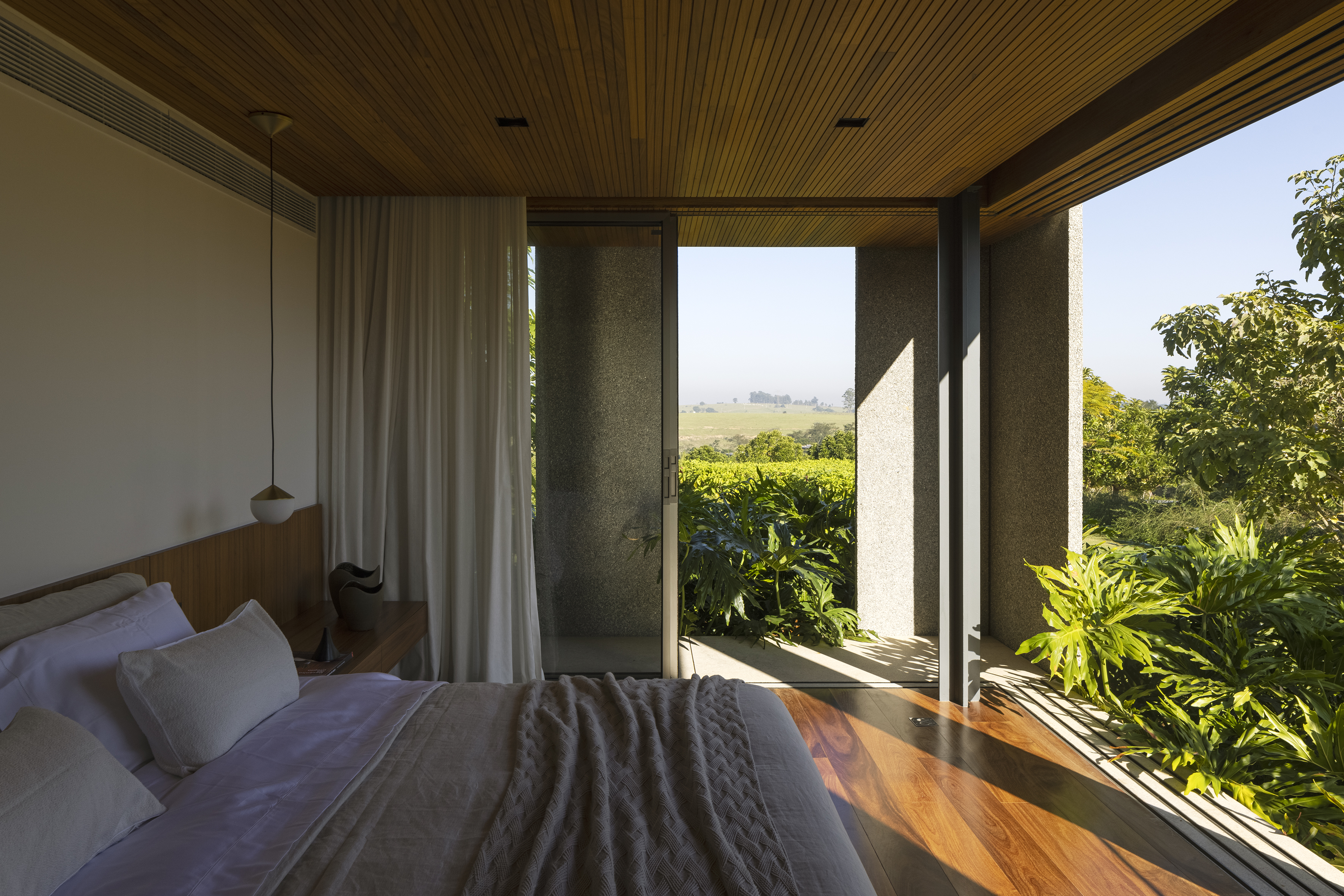
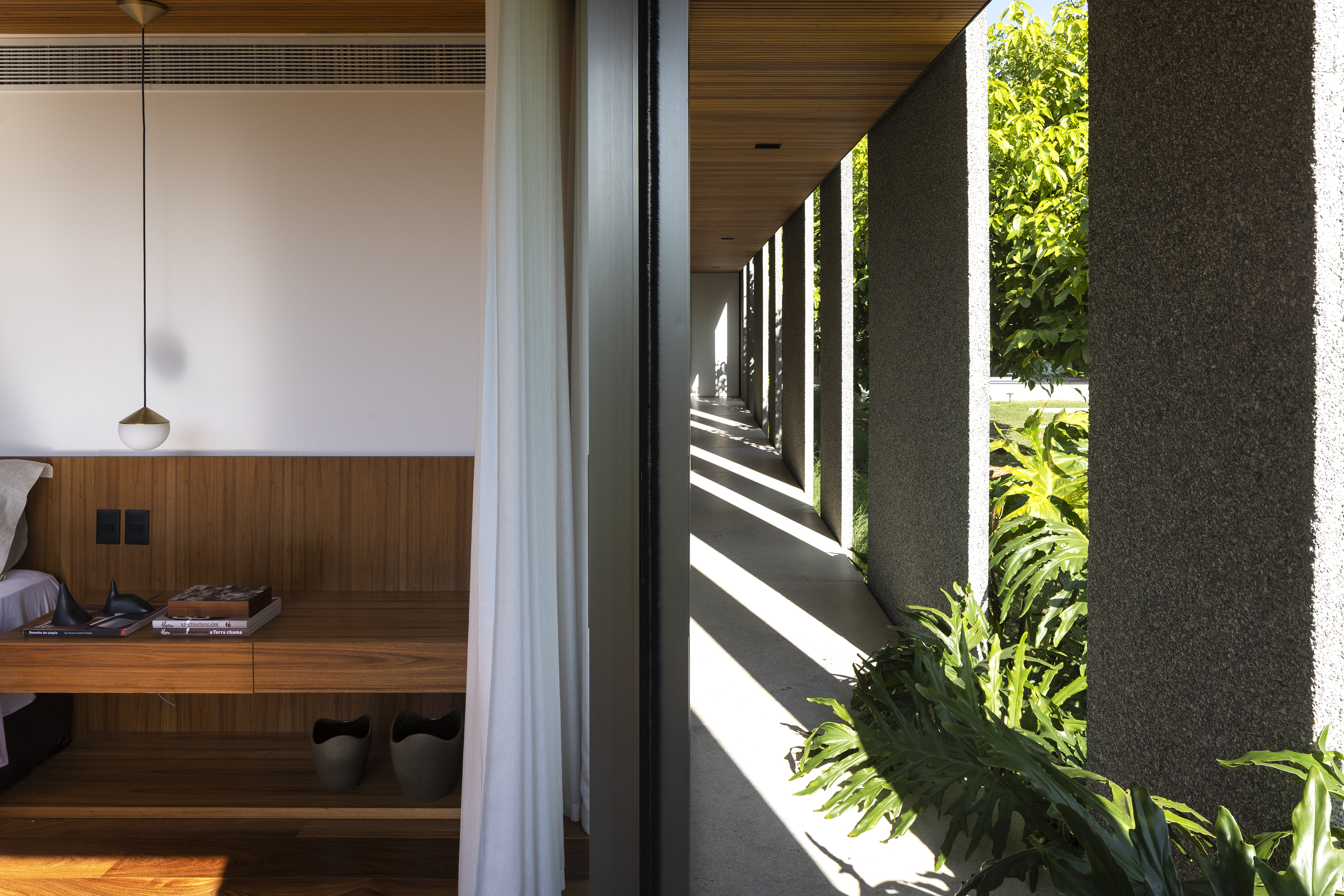

This same concern with nature also occurred at the points of contact between the two main volumes. On both sides where the wooden volume and the concrete volume meet, small internal gardens were created, to mark the transition of materials and provide more privacy for the bedrooms.
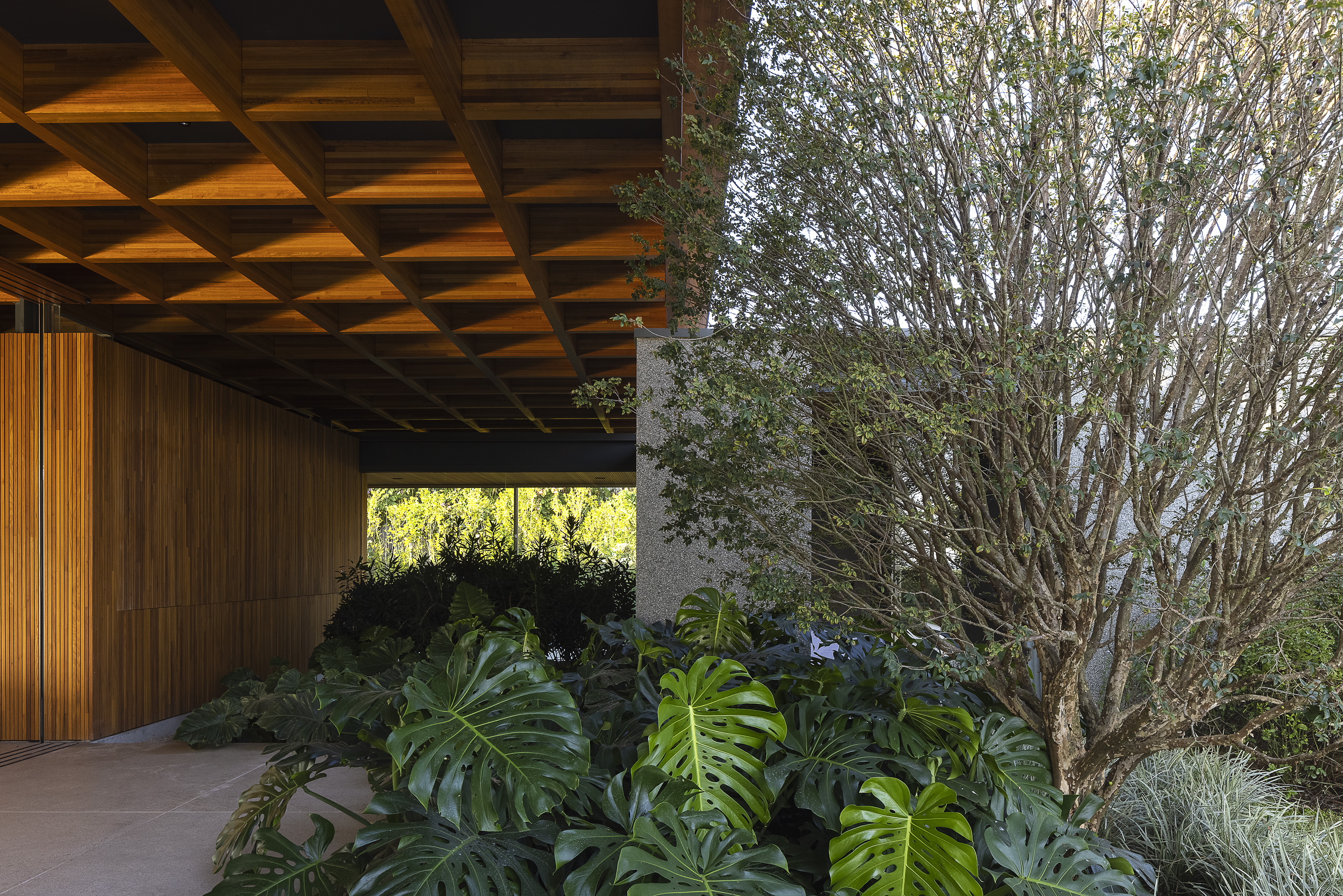

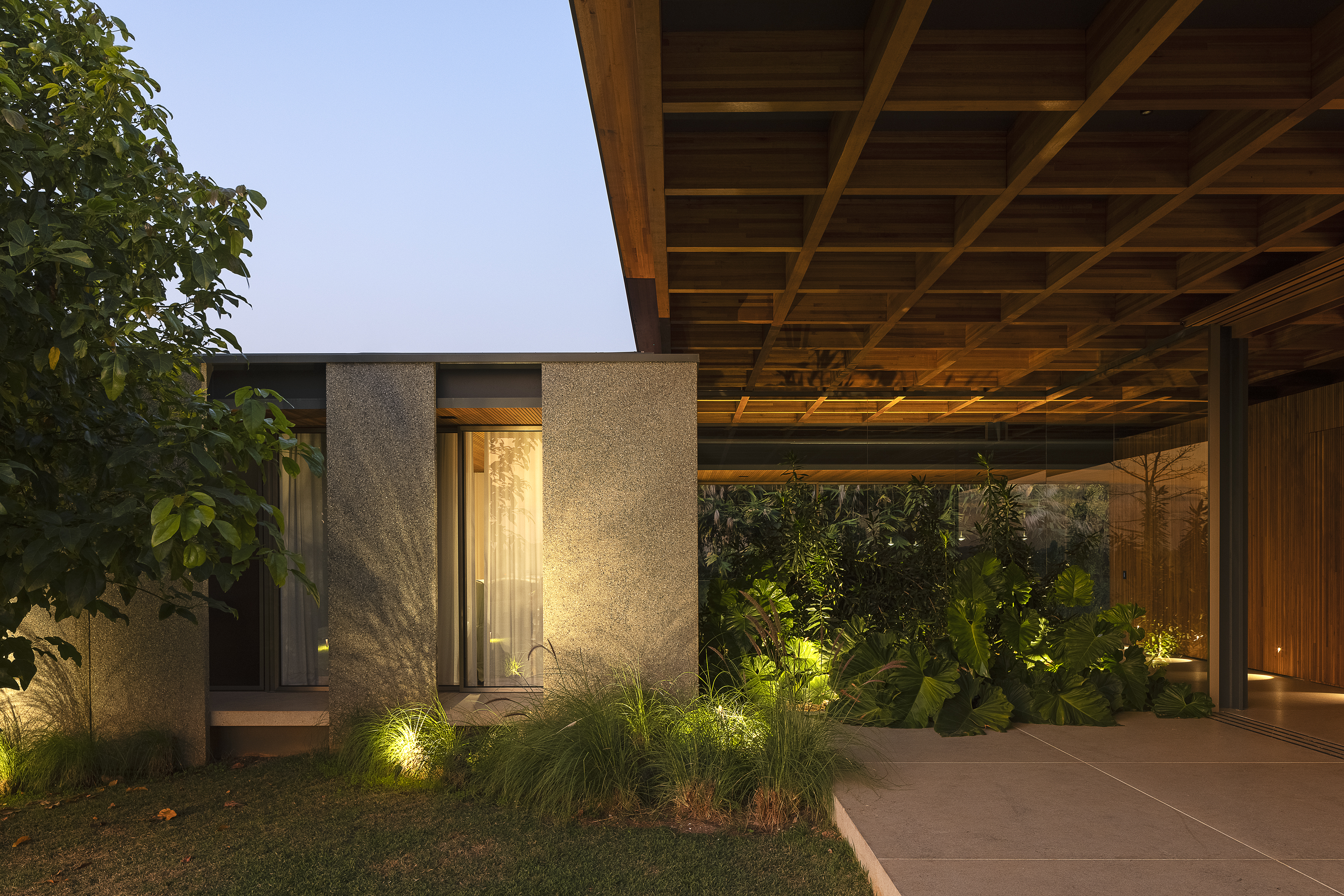
The ceiling on the social volume is one of the main elements of the project. Structurally designed to create large spans with as few supports as possible, and using interlocking wooden beams, it is distributed in a checkerboard pattern that allows for the long and inviting eaves of the balconies.
